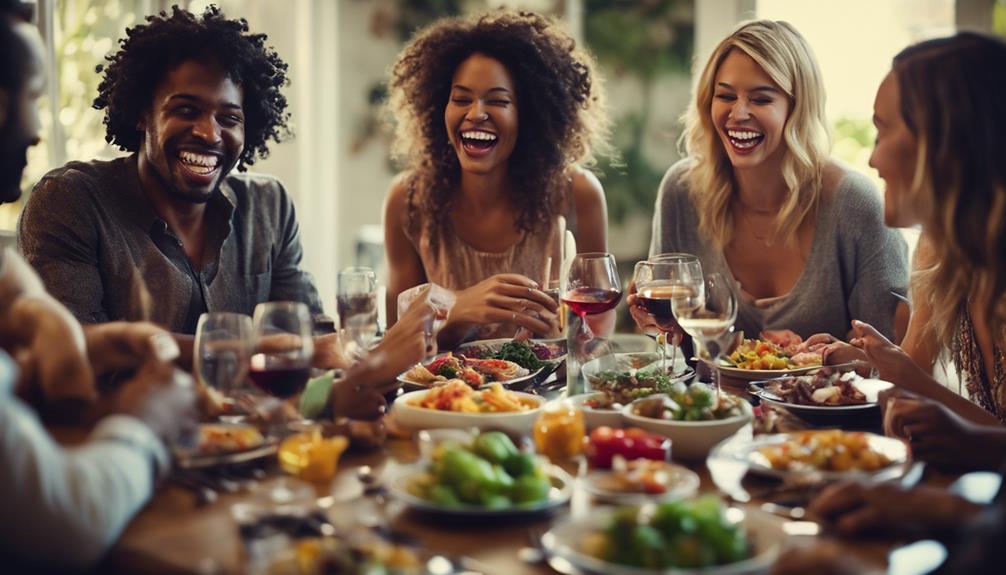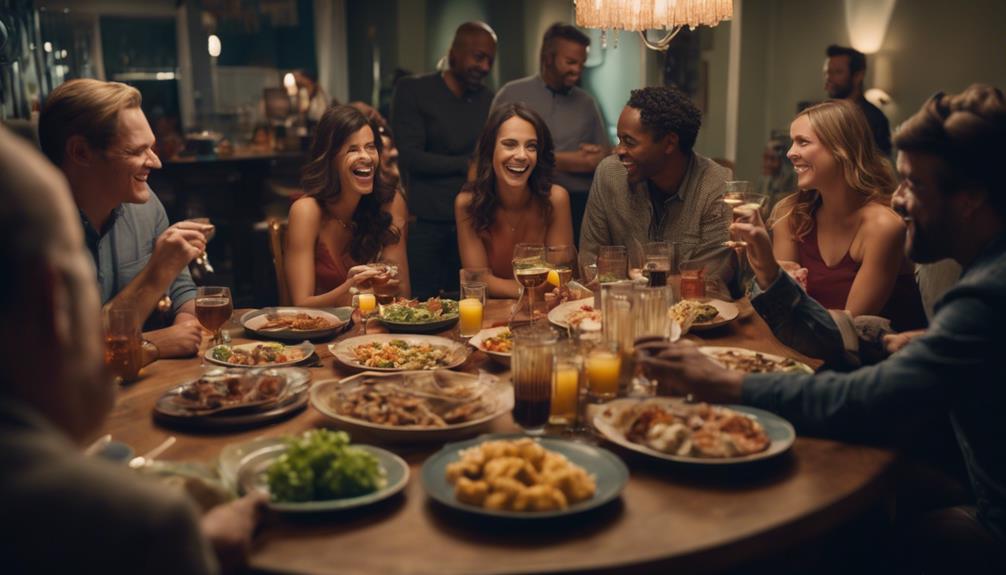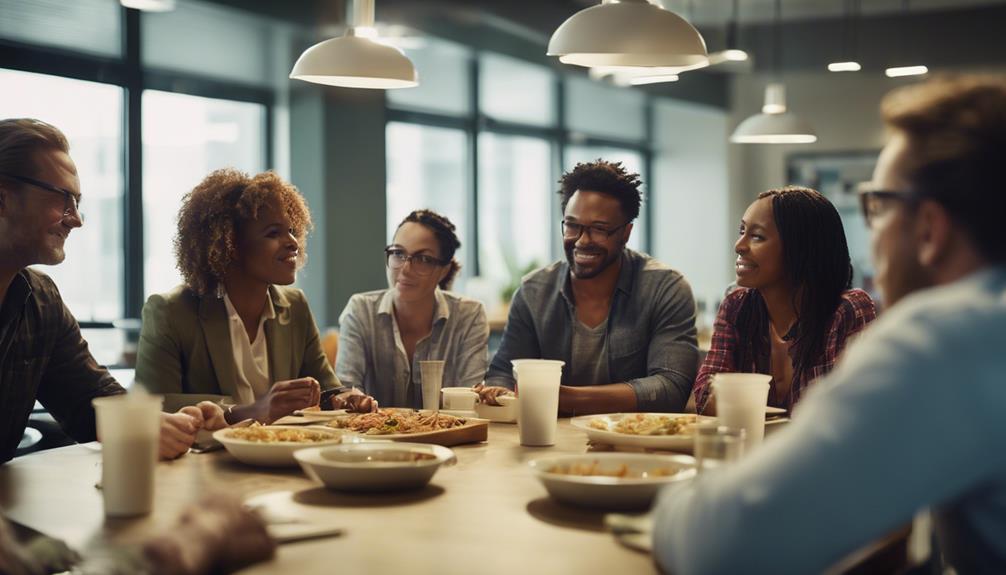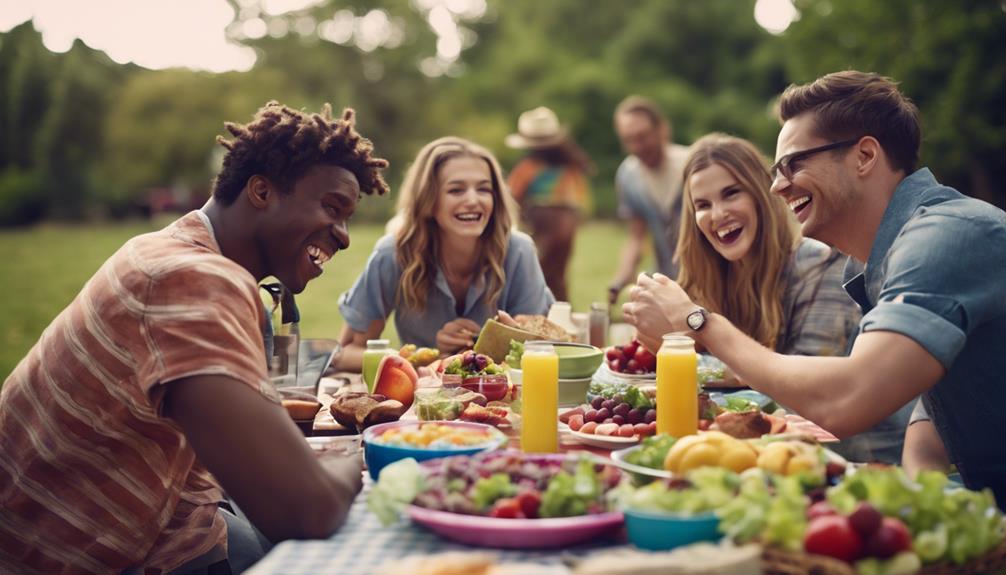How to Use Food and Meals as Socialization Tools

Using food and meals as a tool for socialization can enhance connections and create lasting memories. Here are some tips and strategies to make the most of these opportunities:
- Host Potluck Dinners: Encourage guests to bring their favorite dishes to share, creating a diverse and exciting spread that fosters conversation and camaraderie.
- Cook Together: Plan a cooking session with friends or family members, where everyone contributes to preparing a meal. This collaborative effort can strengthen bonds and create a sense of teamwork.
- Try New Cuisines: Explore different ethnic foods together to expand your culinary horizons and bond over shared experiences of trying new flavors.
- Share Family Recipes: Exchange cherished family recipes with loved ones, passing down traditions and stories that can deepen connections across generations.
- Organize Food-related Activities: Consider activities such as wine tastings, baking competitions, or farmers' market visits to add a fun and engaging element to social gatherings.
- Create a Regular Meal Tradition: Establish a weekly or monthly meal tradition with friends or family members, providing a consistent opportunity to come together and strengthen relationships.
By incorporating these tips and strategies into your social interactions, you can leverage the power of food to nurture connections and create meaningful memories that will last a lifetime.
Benefits of Socializing Through Food
Socializing through food offers a unique opportunity to strengthen relationships and foster a sense of community among individuals. Culinary connections are more than just sharing a meal; they involve bonding over flavors, recipes, and cooking techniques. Foodie friendships are built on a shared passion for exploring new cuisines, trying different restaurants, and exchanging culinary tips.
Research suggests that sharing meals can enhance social bonds by creating a comfortable and relaxed environment for communication. Breaking bread together can lead to increased trust and cooperation among individuals, strengthening relationships over time. In fact, studies have shown that people tend to feel more connected and open while dining together, making mealtime an ideal setting for building meaningful connections.
Planning Memorable Dining Experiences

Exploring diverse culinary experiences and creating engaging meal settings can significantly contribute to crafting memorable dining experiences that strengthen social bonds among individuals. When planning memorable dining experiences, incorporating culinary adventures and thoughtful menu planning can elevate the overall enjoyment and create lasting memories.
Here are three key elements to consider:
- Incorporate Cultural Diversity: Introduce dishes from various cultures to provide guests with a unique and enriching experience that sparks conversations and fosters cultural appreciation.
- Engage the Senses: Utilize a mix of flavors, textures, and presentation styles to create a multi-sensory dining experience that captivates guests' taste buds and enhances their overall enjoyment.
- Personalize the Experience: Consider dietary preferences, allergies, and special requests to ensure all guests feel valued and included in the dining experience.
Hosting a Successful Dinner Party

When hosting a successful dinner party, meticulous planning and attention to detail are critical for ensuring a seamless and enjoyable gathering. Table setting plays a vital role in creating an inviting atmosphere. Choose appropriate tableware, linens, and centerpieces that complement the theme of the event. Ensure there's enough seating for all guests and that the table arrangement promotes conversation and interaction.
Additionally, menu planning is essential. Consider your guests' dietary restrictions and preferences when selecting dishes. Offer a variety of options to cater to different tastes, and plan a well-balanced meal with appetizers, main courses, and desserts. Don't forget about drinks – provide a selection of beverages to accompany the meal. Keep in mind the preparation time for each dish and create a timeline to ensure everything is ready when guests arrive.

Shared meals provide a platform for mealtime bonding activities and shared culinary experiences. During these interactions, individuals can connect, share stories, and build stronger relationships.
Such moments of togetherness can foster a sense of community and belonging.
Mealtime Bonding Activities
Engaging in interactive discussions during mealtime enhances social connections and strengthens relationships. Mealtime bonding activities can create memorable experiences and deepen the bond between individuals. Here are some effective ways to connect over shared meals:
- Cooking classes: Participating in cooking classes together not only teaches new culinary skills but also fosters teamwork and communication.
- Picnic gatherings: Organizing a picnic allows for a relaxed and casual setting where people can enjoy good food and great company in the midst of nature.
- Family-style meals: Sharing dishes in a family-style setting encourages conversation, sharing, and a sense of togetherness around the table.
These activities can help in building stronger relationships and promoting a sense of unity among individuals.
To deepen social connections and strengthen relationships through shared meals, exploring various culinary experiences can serve as a meaningful way to bond and create lasting memories. Engaging in cooking classes or attending food festivals are excellent ways to connect with others over a shared love for food. Cooking classes provide an interactive environment where individuals can learn new skills, collaborate in the kitchen, and enjoy the fruits of their labor together. On the other hand, food festivals offer a diverse range of tastes and cultural experiences, sparking conversations and fostering a sense of community among participants. By participating in these shared culinary experiences, individuals not only enhance their cooking abilities but also create lasting bonds through the joy of food.
| Culinary Experience | Description |
|---|---|
| Cooking Classes | Interactive learning environment to enhance skills |
| Food Festivals | Diverse range of tastes and cultural experiences |
Breaking the Ice With Food

When initiating conversations in social settings, utilizing food as a facilitator can help create a comfortable and inviting atmosphere. Icebreakers and conversation starters centered around food can help individuals connect and engage more easily.
Here are three practical ways to break the ice with food:
- Potluck Parties: Organizing a potluck where each person brings a dish can encourage sharing recipes, discussing food preferences, and learning about different culinary traditions.
- Interactive Cooking Sessions: Hosting a cooking session where participants can prepare a dish together fosters teamwork, communication, and a sense of accomplishment, leading to natural conversations.
- Food Tastings: Arranging a food tasting event with various samples allows people to explore new flavors, share their opinions, and bond over their culinary experiences.
Enhancing Work Relationships With Lunches

Enhance work relationships by organizing regular team lunches to foster camaraderie and collaboration among colleagues. Lunchtime networking provides an excellent opportunity for team building, allowing colleagues to interact in a more relaxed setting outside the confines of the office. Meal sharing during lunch breaks not only nourishes the body but also nurtures relationships, leading to a more cohesive and productive work environment.
To make the most out of team lunches, consider incorporating a variety of activities and conversation starters to promote engagement and bonding. Below is a table outlining some ideas for enhancing work relationships during lunchtime:
| Activity | Purpose | Benefits |
|---|---|---|
| Icebreaker Questions | Encourage conversation | Facilitates sharing and getting to know each other |
| Team Trivia | Foster teamwork | Promotes collaboration and friendly competition |
| Skill Sharing | Enhance professional development | Encourages learning from one another |
Food-Based Activities for Socializing

Organizing food-based activities can further enhance socialization among colleagues by providing a fun and interactive way to bond over shared culinary experiences. To foster a sense of community and teamwork in the workplace, consider incorporating the following food-based activities:
- Cooking classes: Hosting cooking classes allows colleagues to learn new culinary skills together while encouraging teamwork and communication. It provides a hands-on experience that promotes creativity and collaboration in a relaxed setting.
- Potluck parties: Potluck parties are a great way for colleagues to share homemade dishes, exchange recipes, and enjoy a variety of foods in a communal setting. This activity promotes inclusivity and allows individuals to showcase their cooking talents while fostering a sense of belonging within the team.
- Food-themed team-building challenges: Organize team-building activities that revolve around food, such as cooking competitions or food tastings. These challenges encourage cooperation, problem-solving, and creativity while strengthening bonds among coworkers.
Frequently Asked Questions
How Can Dietary Restrictions or Allergies Be Accommodated When Using Food as a Socialization Tool?
When accommodating dietary restrictions, individuals can inquire about allergies and preferences to provide allergy-friendly options. Offering a variety of dishes that cater to different needs ensures inclusivity and allows everyone to enjoy socialization through shared meals.
What Are Some Tips for Incorporating Cultural Diversity Into Food-Based Social Activities?
Cultural fusion in food-based social activities enhances diversity. Recipe exchange promotes understanding and connection. Sharing traditional dishes fosters appreciation for different cultures. Embracing culinary customs creates a rich tapestry of flavors and experiences, enriching social interactions.
Is It Appropriate to Discuss Sensitive Topics or Personal Issues During Mealtime Socialization?
Navigating mealtime boundaries requires mindfulness. Personal sharing during meals can deepen connections but should be approached with caution. Respectful dialogues can enhance socialization, yet sensitive topics might be best discussed in a more private setting.
How Can Individuals With Different Eating Habits or Preferences Be Included in Group Food-Related Activities?
When catering to different eating habits, inclusive menus and open communication are key. Understanding needs and accommodating preferences ensure everyone can partake in group food-related activities, fostering a sense of unity and enjoyment.
What Are Some Creative Ways to Incorporate Food Into Virtual Social Gatherings or Long-Distance Relationships?
Incorporating food into virtual social gatherings can be fun and engaging. Virtual cooking sessions allow friends to bond over shared recipes, while long-distance potlucks enable loved ones to enjoy a meal together despite being far apart.











